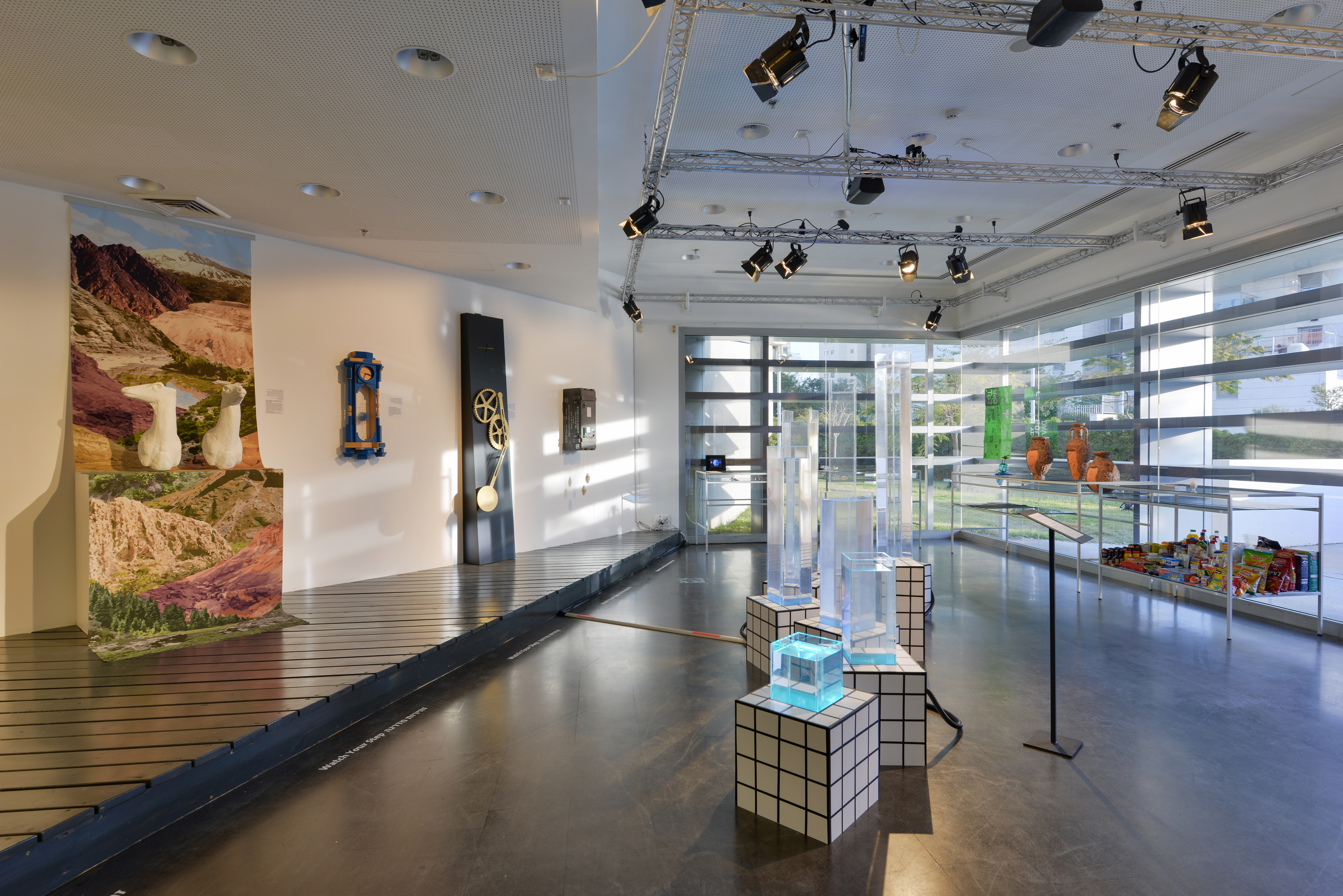It seems like in
the past time was more cyclical, fluid, ambiguous. Fruit revealed the season of
the year and the shadow of a tree told us what time of day it was. Time was an
experience of sensations and scents.
With the development of the mechanical clock in the 16th century, pocket watches were adorned with a new detail – a hand. At this stage, watches sported only one hand that indicated the hour, yet its pointed, arrow-like shape already alluded to the command to be precise and stick to a schedule, and to the related tension that would continue to grow over the centuries.
Our increasing commitment to timing, the dependence on external means, and the use of precise, fixed time units and conventions have been growing increasingly more stringent. Humanity has created an official collective time table, which indoctrinates us by means of a chorus of highly precise and tyrannical atomic watches. Alarm clocks, attendance clocks, alerts, stop watches and timers measure every second, mili-second, micro-second and nano-second. The loss of flexibility is, among other things, the reason for the removal of the Big Ben in London for a major repair project scheduled to last four years, which has been initiated because the clock is running six seconds fast.
Today, most of us no longer carry time on our wrists, the hands of the clock no longer move in circles, and we have grown increasingly distant from the recurrent heartbeat of cyclical time. We are constantly advancing forward, chasing the arrows of linear, one-directional time. We aim for a destination and deadline, for a time when things will be easier, and we will sense some kind of relief. Yet we are in fact also fearful that time will pass and run out; we refuse to grow old, to lose our stamina, to fall out of the race. Between the desire to rush forward and the constant fear of the end, there is the present. This elusive moment, in which the past yields to the future, is constantly unfolding under our very eyes, right now. Didn’t you notice? It’s already gone, but here is another moment, and another one, another present. All you have to do is pay attention.
Time Machines exhibition is an exhibition from the collection of the Design Museum Holon. A group exhibition of Israeli designers that showcasses existing works that deal with the dimension of time and commissioned works created especially for the exhibition
With the development of the mechanical clock in the 16th century, pocket watches were adorned with a new detail – a hand. At this stage, watches sported only one hand that indicated the hour, yet its pointed, arrow-like shape already alluded to the command to be precise and stick to a schedule, and to the related tension that would continue to grow over the centuries.
Our increasing commitment to timing, the dependence on external means, and the use of precise, fixed time units and conventions have been growing increasingly more stringent. Humanity has created an official collective time table, which indoctrinates us by means of a chorus of highly precise and tyrannical atomic watches. Alarm clocks, attendance clocks, alerts, stop watches and timers measure every second, mili-second, micro-second and nano-second. The loss of flexibility is, among other things, the reason for the removal of the Big Ben in London for a major repair project scheduled to last four years, which has been initiated because the clock is running six seconds fast.
Today, most of us no longer carry time on our wrists, the hands of the clock no longer move in circles, and we have grown increasingly distant from the recurrent heartbeat of cyclical time. We are constantly advancing forward, chasing the arrows of linear, one-directional time. We aim for a destination and deadline, for a time when things will be easier, and we will sense some kind of relief. Yet we are in fact also fearful that time will pass and run out; we refuse to grow old, to lose our stamina, to fall out of the race. Between the desire to rush forward and the constant fear of the end, there is the present. This elusive moment, in which the past yields to the future, is constantly unfolding under our very eyes, right now. Didn’t you notice? It’s already gone, but here is another moment, and another one, another present. All you have to do is pay attention.
Time Machines exhibition is an exhibition from the collection of the Design Museum Holon. A group exhibition of Israeli designers that showcasses existing works that deal with the dimension of time and commissioned works created especially for the exhibition






